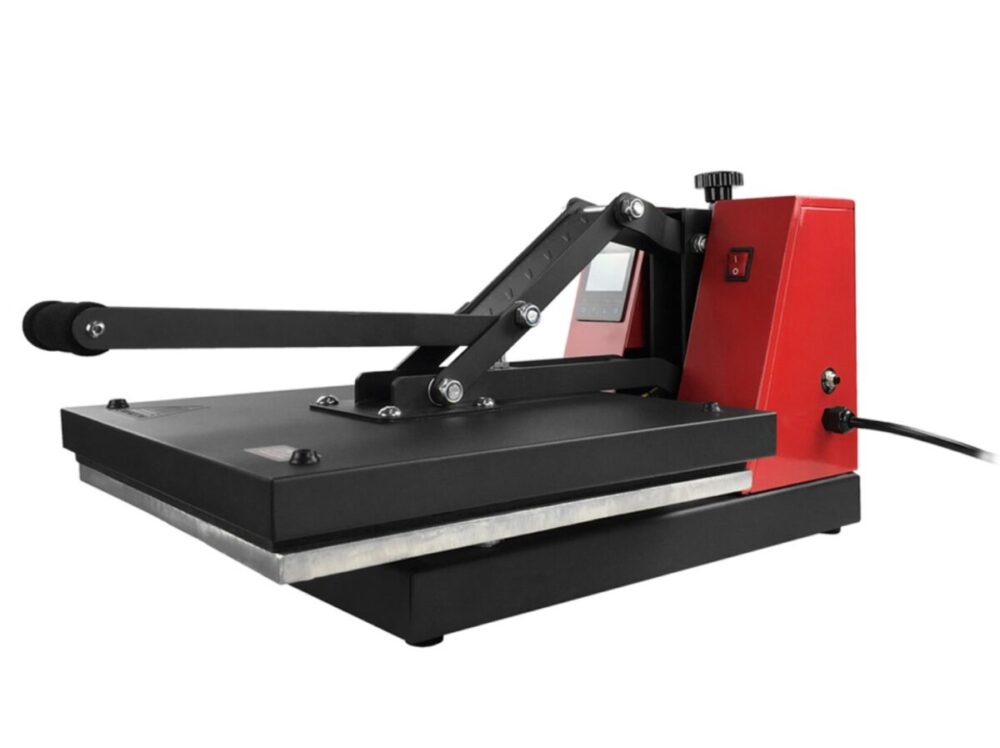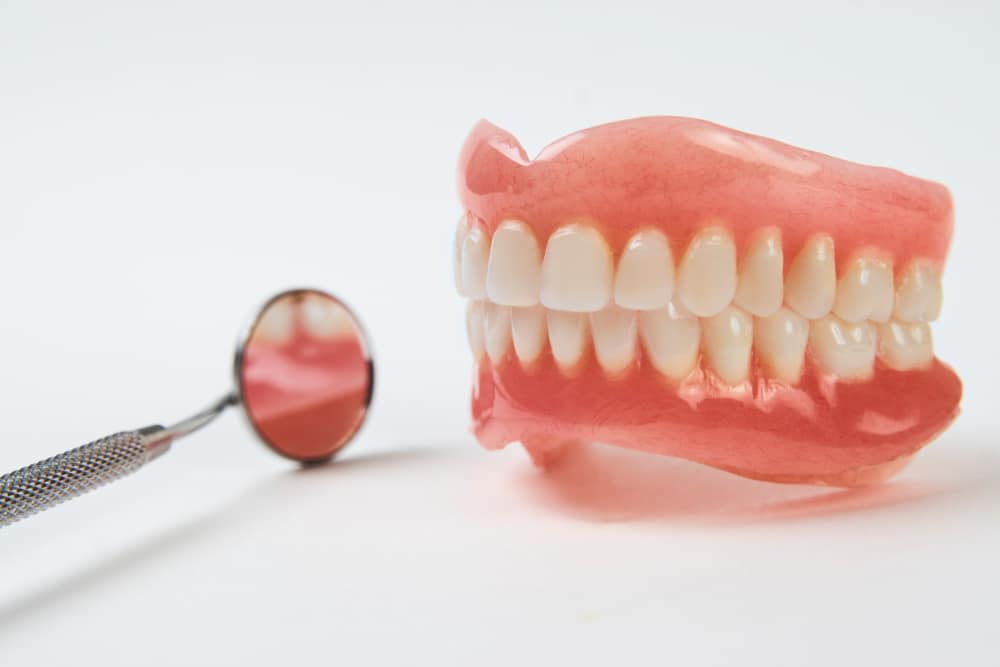If you own a promotional clothing or T-shirt printing company, your heat press will be the backbone of your organization. It will be running all day, and sometimes all night.
So, it’s obvious that your heat press needs to be reliable and robust in order to preserve your business’s momentum and product turnaround.
It doesn’t have to stop at T-shirts, you can also use it for hoodies, baseball caps, ceramic mugs, office supplies, tote bags, workwear, and much more.
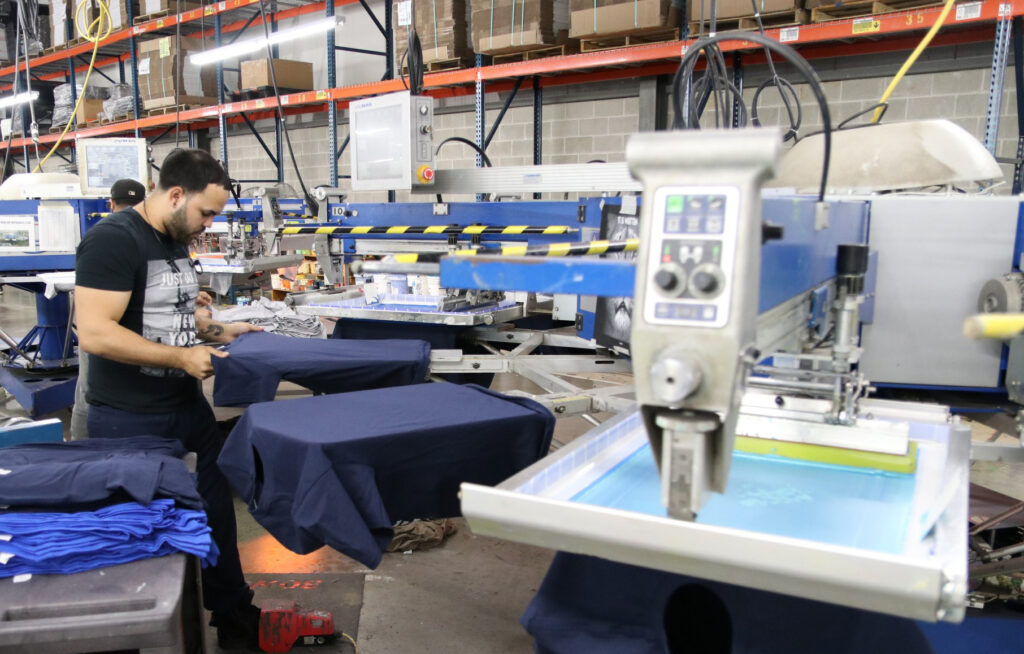
What does a heat press do?
A heat press will apply the correct amount of pressure and heat to an object in order to embellish artwork transfers onto the object’s surface. The better the heat press and materials used, the longer the artwork will hold onto the surface it is applied to. Consistent temperature and pressure are essential for successful results.
They come in a range of sizes to accommodate objects of all dimensions, so no matter what your company plans on doing, there will be a press that is suitable for your needs.
In terms of labor and productivity, there are manually operated heat presses as well as automated ones.
Automated presses are more expensive, but they do save a lot of hassle when it comes to the operation of the press as there is next to no human involvement needed. These are used more in commercial setups that churn out thousands of items a day.
Manual heat presses require constant attention and labor; however, the cost of each unit is much less; Ideal for new starters and those with limited funding.
The embellishment process usually takes seconds, a minute at the most, so if your company is producing some good orders, the process may be a little repetitive, but practice makes perfect!
How to make a transfer to heat press onto clothing
The transfers used in the application process are made from either transfer paper or heat transfer vinyl (HTV). Like with most ingredients for a high quality finished product, there are pros and cons to each; Usually revolving around cost and time.
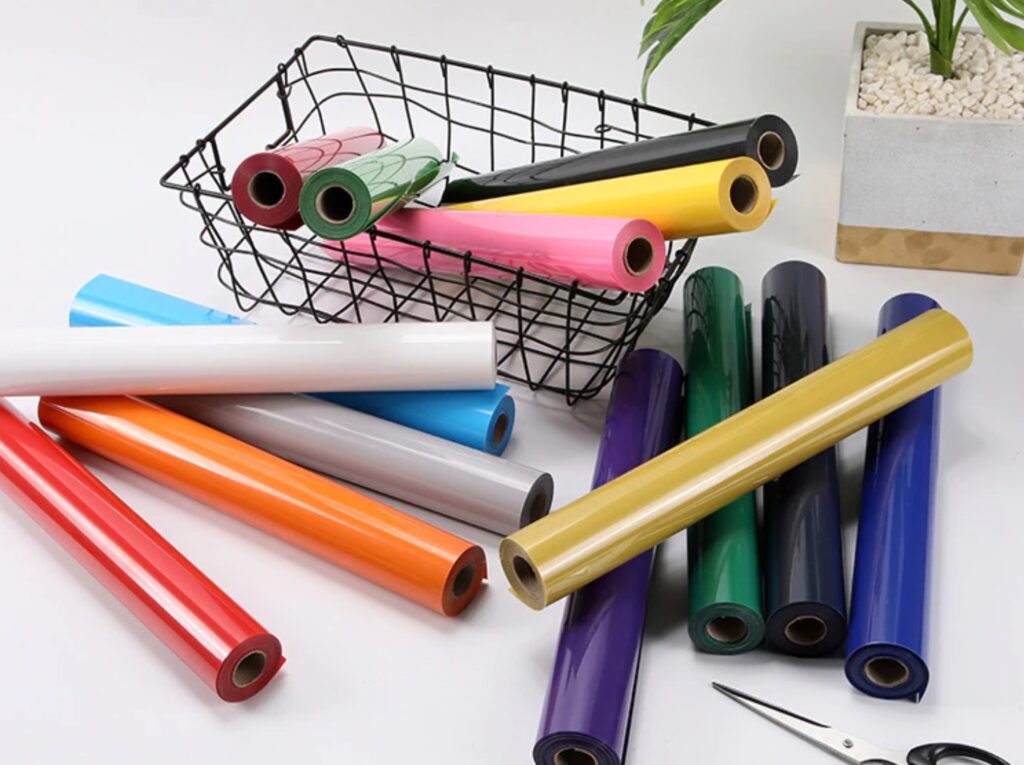
Heat Transfer Paper:
Heat Transfer Paper can be printed on by using an inexpensive desktop inkjet or laser printer at home, you probably already have a printer that can be used for this. It uses the same printer and ink that you use at home for printing on printer paper, so nothing fancy is needed. This ensures that the costs and investment are low, perfect for new starters wanting to get the ball rolling.
It will adhere to the same garments as heat transfer vinyl, but the durability, however, is where the cheap cost of this product shows. Heat Transfer Paper will last for about 25-30 cycles of washing if proper care instructions are followed. After that point, the dreaded fading and cracking begin.
Heat Transfer Vinyl:
Printable Heat Transfer Vinyl is another great way to print your own heat transfers and to achieve multi-colored designs without having to layer vinyl. However, the initial investment that is needed to get started with this is significantly higher than using Heat Transfer Paper.
You will need a wide format printer, so your household printer won’t work with this vinyl. Vinyl printer costs start in the thousands, so an initial outlay will be needed, but the results are incredible. Multiple colors can be used, and once they adhere to the material, they hold on for the life of the garment.
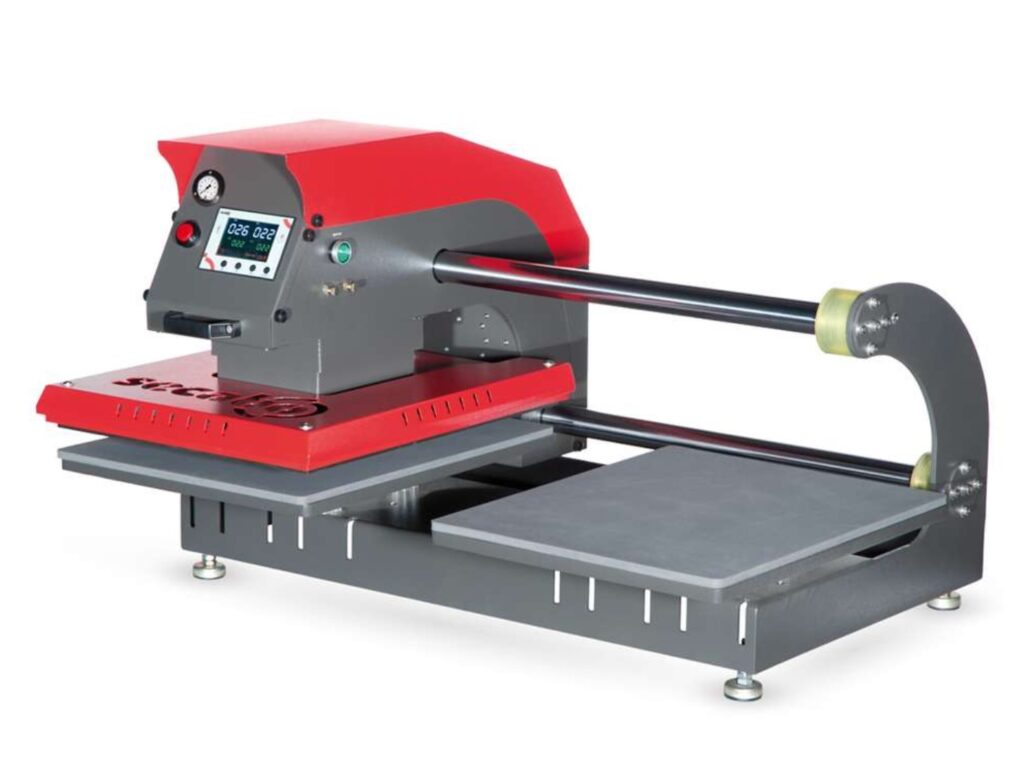
What is the best heat press?
Beauty, and thus functionality, is in the eye of the beholder because your needs will be completely different from your competitor. The size of the garments or objects that you want to embellish is a factor to consider. Applying a transfer to a baseball cap requires a completely different set up compared to applying to a T-shirt, the same goes for mugs, mouse mats and other objects. Some are multi-functional; however, these will cost more. If you want to know why a cheap heat press isn’t always a wise option, you can read all about it if you visit heatpresshenry.com.
T-shirt printing heat presses are by far the most common because they can be used by almost anyone. They are of medium size and will accommodate most garments that can be laid flat.
Types of heat press
There are usually two styles of heat press:
Clamshell heat presses open up like a clam, like an Oyster shell if you will.
Swing away, heat presses open up vertically and then swing away to the side.
Clam presses are often favored amongst garment printers as they require less operator effort, and they make for slightly faster production speeds with slightly less strenuous user effort required that is needed with swing-away presses.
Swing away presses are great for reducing the chances of the user burning themselves as the hot plate moves completely out of the way when the user comes to removing the embellished garment and inserting the new garment. They do require a lot more space, though, so if your premises are on the small side, this may be an issue.
The main factors to consider when buying a heat press are:
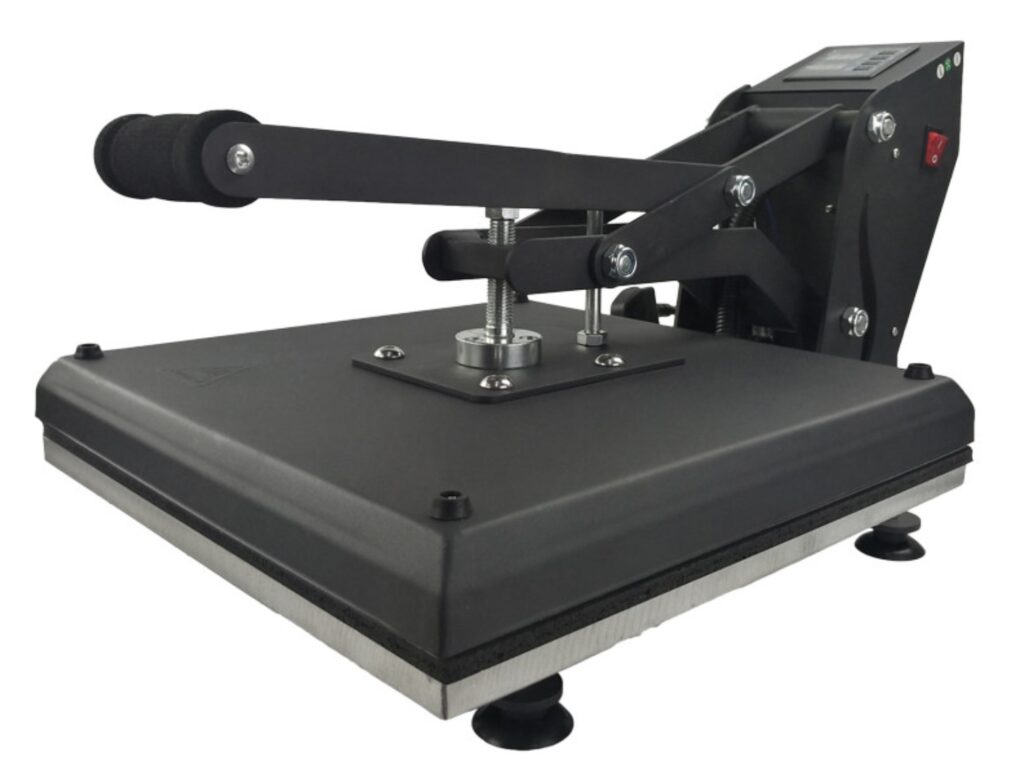
Reliability
This is usually always reflected in the price of the heat press. You undoubtedly get what you pay for, so it’s worth spending a little more. If you buy cheap ones, you will probably have to buy another pretty soon.
Functionality
If you plan on producing lots of printed clothing, you will need the right kind of heat press that allows the garment to be laid perfectly flat and which applies the perfect amount of pressure at the perfect temperature. If you plan on embellishing ceramics, you will need a completely different style.
Time
Some clothing heat presses are automated, meaning that the application of pressure and the temperature it sits at will be pre-programmed. This massively saves on labor costs; however, the units themselves will be more expensive. Automated systems are usually installed within established companies that can justify the cost of the unit.
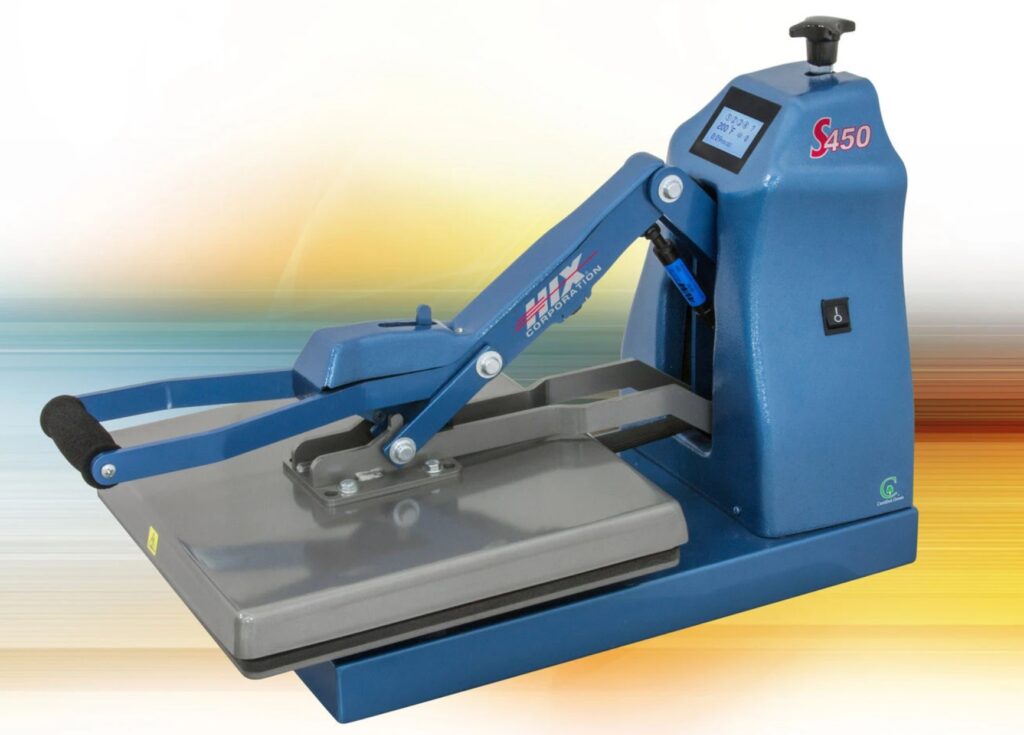
Size
This is an essential element to consider when looking at buying a heat press. If you envisage that your company will diversify its products in the future, it would be worth buying large ones that you are ready for when those products come in. It would be very expensive to buy a new press every time you get a larger product to apply the transfers to. Think ahead, and it will save you in the long run.

